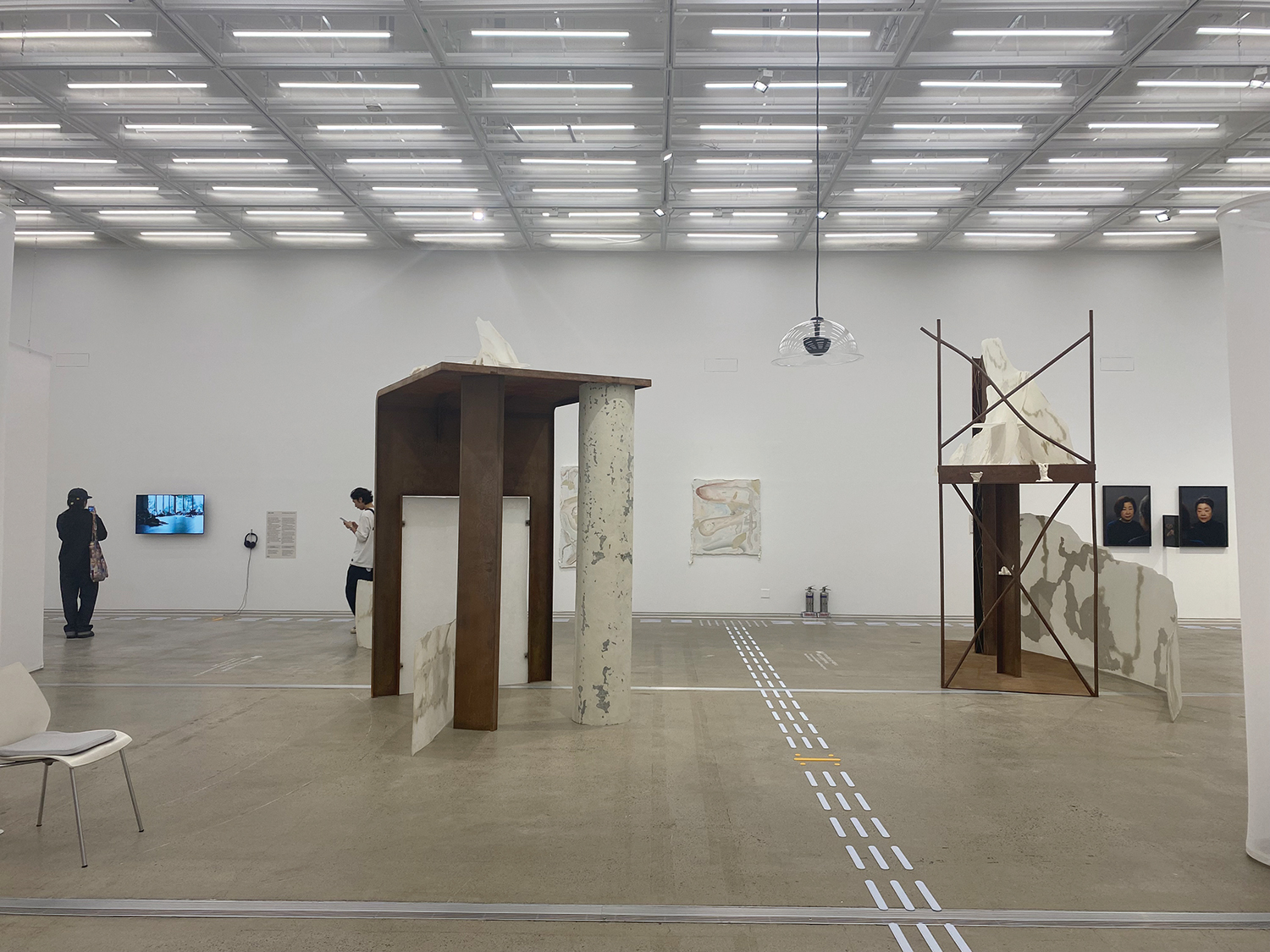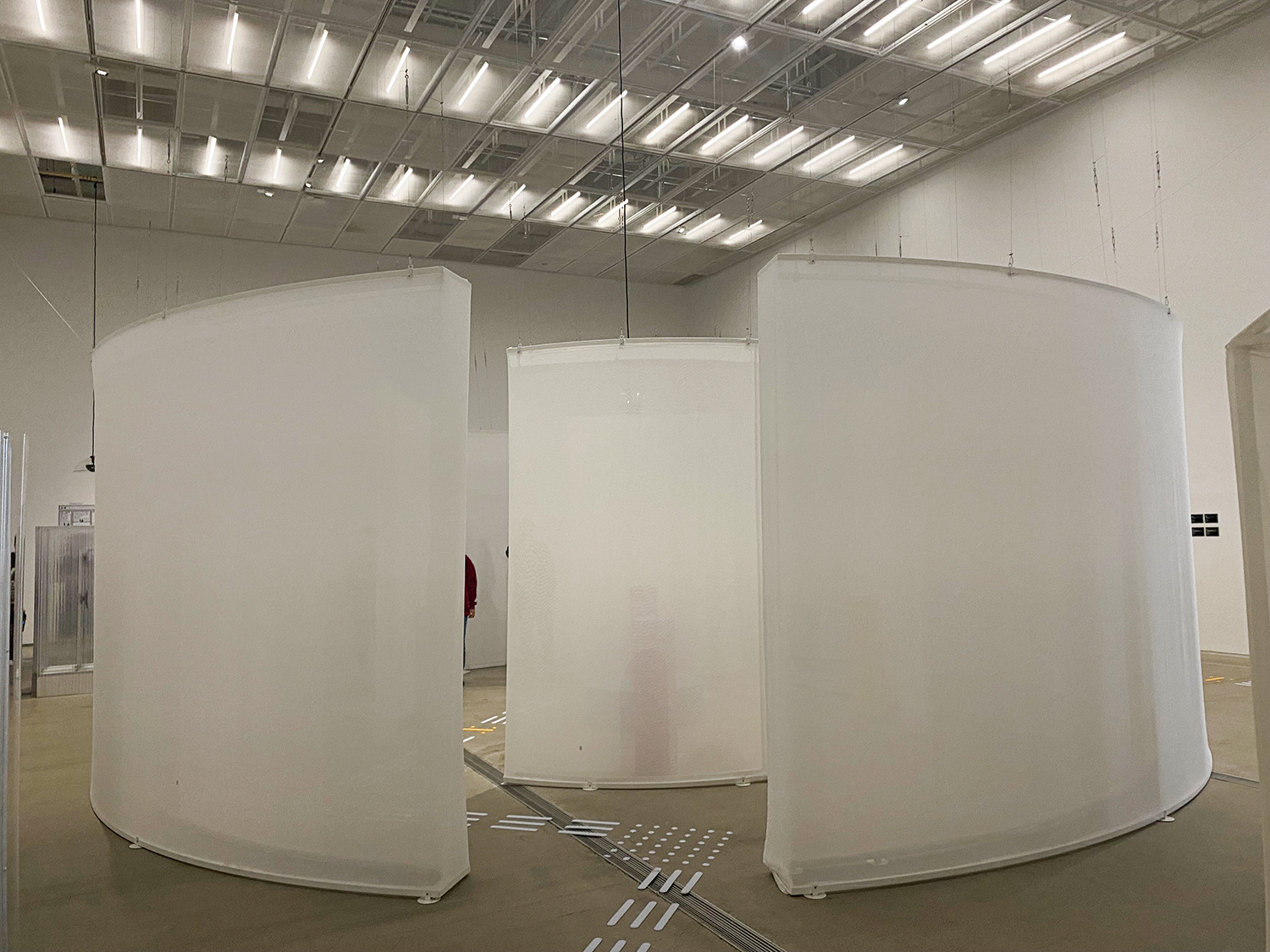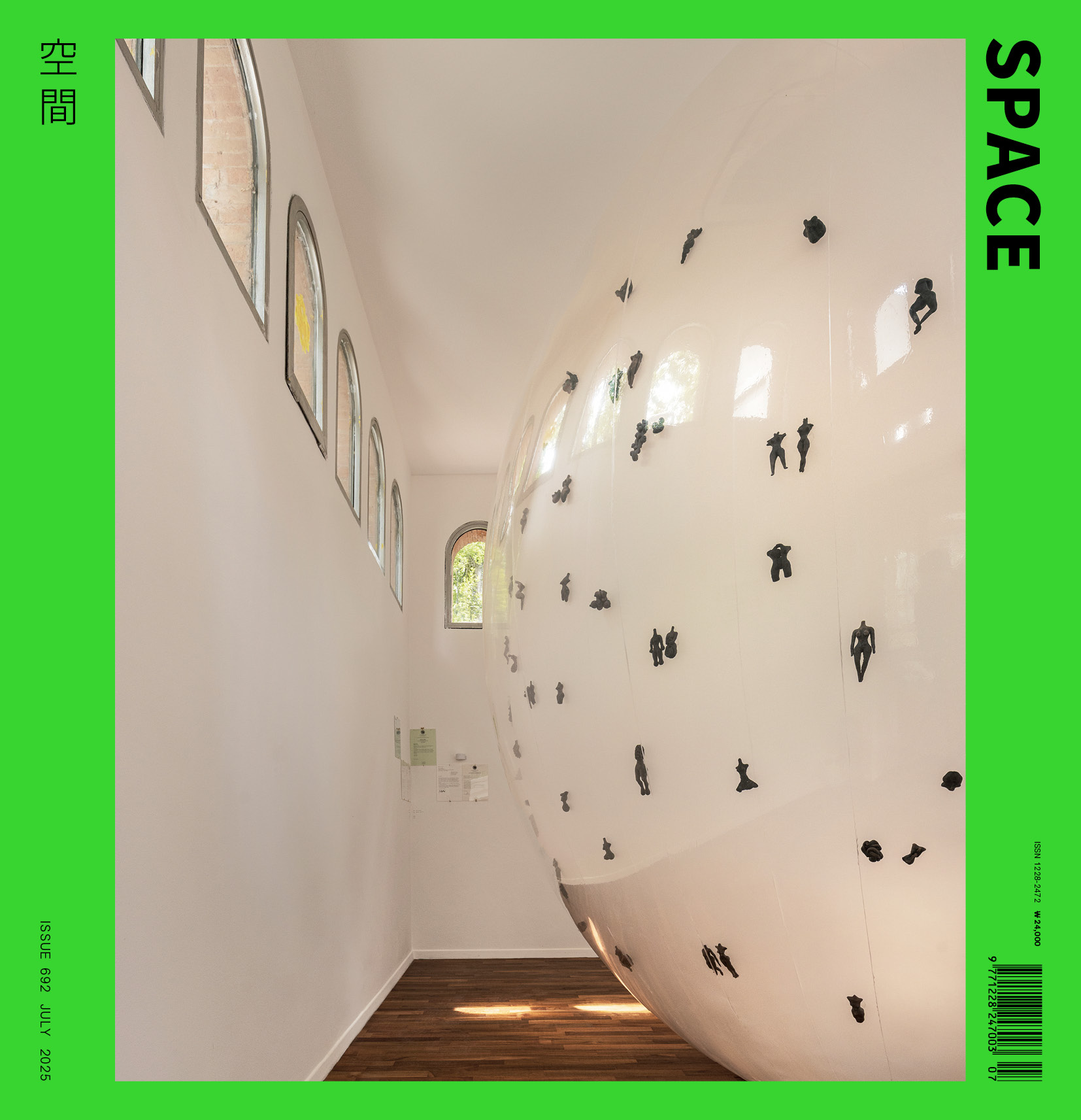SPACE July 2025 (No. 692)

Exhibition view of ‘Looking After Each Other’ ©Kim Hyerin

Installation view of Deaf Space: Double Circles by Richard Dougherty ©Kim Hyerin
On May 16, the exhibition ‘Looking After Each Other’ opened at MMCA Seoul. This exhibition which explores how to welcome diverse bodies, such as bodies with and without disabilities, aged bodies, and unwell bodies is comprised of approximately 40 paintings, sculptures, photographs, architectures, and performances by 15 local and international artists/teams. The entire exhibition space is barrier-free, and braille block is installed on the floors of the exhibition room and the Seoul Box. Also, to aid deaf people who may have difficulties navigating their surroundings while communicating in sign language, Richard Dougherty, who also uses sign language and is one of the participating artists of this exhibition, highlighted the thresholds between the exhibition room’s entrances and exits with distinctive colours in his work Deaf Space: Door Frames to make the exhibition more accessible to all visitors.
The exhibition is divided into three sections, entitled ‘Inclining Bodies’, ‘Odd Communities’, and ‘When Different Bodies Meet’. In the first section ‘Inclining Bodies’, the artist Christine Sun Kim who uses sign language pinpoints the connection between sound and language and turns sound into something visible via her drawing. Sara Hendren and Caitrin Lynch focus on the daily life of Cindy Wack Garni who lost her legs and fingers following a heart attack. Instead of relying on her robot hands, Cindy creates tools for her daily use, and these tools are showcased in the work Engineering at Home. The way the silicon-added fork functions perfectly as a fork despite its slightly different appearance makes us rethink the rigid connection between function and form. Panteha Abareshi’s Object Desire, which uses leg braces to express the way bodies with disabilities are treated, and Chun Kyungwoo’s To Lean or Be Leaned Upon, which shares the thoughts of aging women through photography, also joins in the attempt to challenge our preconceptions regarding the body. These works demonstrate how powerful bodies can be when they are unfettered by prejudices.
In ‘Odd Communities’, an imaginative space where people with different bodies can come together and celebrate each other has been conceived. Through her installation, Fading Sounds, Remaining Sounds, Kim Eunseol observes the residual traces that sounds leave on bodies. A faint voice can be heard through the video screen that is blurred by the semitransparent polycarbonate wall, and this sound is transmitted via wall vibrations to reenact the sensual experiences of the artist who uses hearing aids. Richard Dougherty’s Deaf Space: Double Circles, a circular space modeled after the way deaf people sit in a circle for conversation, envisions an open space where one can see others from anywhere. The architect David Gissen, who uses a wheelchair and prosthetic leg, collaborates with Brett Snyder and Irene Chang to propose new spaces for people with disabilities through cartoons, texts, and building models.
The third section ‘When Different Bodies Meet’ is composed of performances, lectures, and conversations between various participants such as people with disabilities, elderly people, and migrants. It covers a wide range of issues that include gestures of migrants in a state of non-work, movements through prosthesis, and moments when various physical sensations, disabilities, and old age intersect. This exhibition, which demonstrates how to sustain the world through understanding and solidarity, will be on show until July 20.





